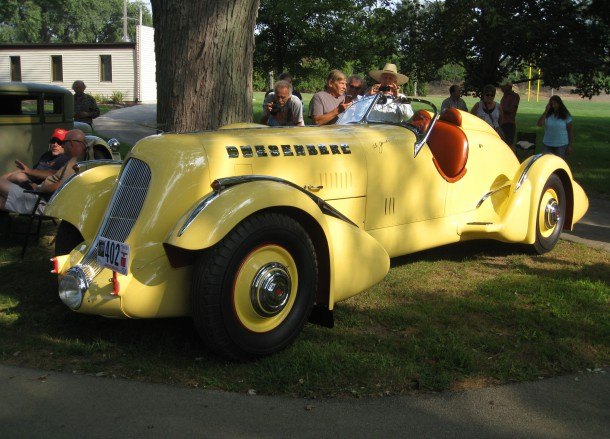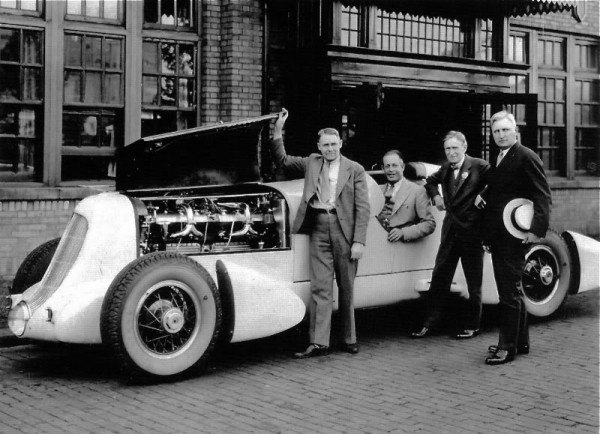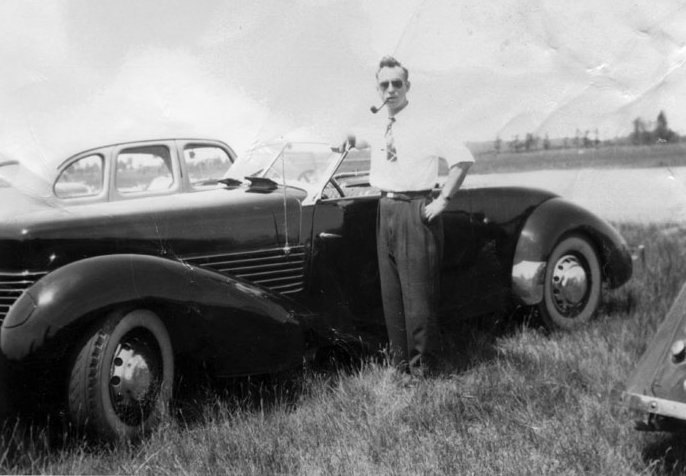#Cord
Piston Slap: The Case for the Front-Mounted Transaxle?
DAG writes:
Why don’t automakers design front-wheel-drive cars with the transaxle in front of the engine? This moves the front wheels forward and improves weight distribution; offers better potential for aerodynamics and leaves space under the hood for pedestrian protection. With a turbo four-cylinder, the engine could have clearance from the firewall. Also, the engine and transaxle could be mounted on a pivoting subframe, hinged at the front, to drop down at the back for major maintenance; disconnect steering and exhaust to drop cradle.
The engine would sit in the space where rack and pinion generally resides; steering gear design would be a challenge for direct mechanical actuation. Perhaps traction would be reduced. Would crashworthiness also be affected?
With the Law Onside, a Cord Resurrection Is in the Works
Amelia Earhart owned one, and likely would have seen more sunsets had she chosen it as her ride of choice, instead of a Lockheed Electra.
It was one of the great American automobiles of the interwar era, and a favorite of matinee stars — a nameplate steeped in style, class and technological innovation. But, ultimately, short-lived.
Or was it? If one Texan has his way, we could soon see a small-scale revival of the Cord brand.
Ab Jenkins and His Mormon Meteor, Part Two (With Designer's Original Drawings)
In Part One, we saw how Ab Jenkins started his speed record career in a Studebaker, then moving to Pierce-Arrow. His greatest success, though, would be at the wheel of a Duesenberg.
Because its name is German, a lot of people are mistaken in thinking that Duesenbergs — as other magnificent classic-era cars like Hispano-Suizas — came from the European continent. Fred and Augie Duesenberg though, were from the heartland of America, based in Indiana, with a factory in Indianapolis. While the name Duesenberg is most often associated with the great Model J, before E.L. Cord bought their company and tasked the brothers with building the best automobile in the world, Duesenberg made its name in racing. In fact, nearly half of all competitors in the 1931 Indy 500 qualified with either a Duesenberg chassis or engine — or both.
Ab Jenkins and His Mormon Meteor, Part One
Left to right: Augie Duesenberg, Ab Jenkins (seated in Mormon Meteor), Harvey Firestone, Unknown
Does the name Ab Jenkins mean anything to you? He was once famous as the fastest man on land. What about the name Bonneville? If you’re a car enthusiast, you might associate it with Pontiac, as Bonneville was the nameplate of the now-deceased brand’s flagship sedan. Alternatively, you might think of the Bonneville Salt Flats, where many land-speed records have been set.
As a matter of fact, if you know the name Bonneville in either of those cases, it’s likely due to the efforts of Ab Jenkins, with supporting roles played by Augie Duesenberg and Herb Newport.
When Asked What Attracted Her to Harold, She Replied, "His Car, of Course."
Harold Allsop and the Cord he loved.
There were a couple of 1937 Cord 812s* for sale at RM Auctions’ sale held in conjunction with the 2014 edition of the Concours of America at St. John’s, the Detroit area’s member of the triumvirate of top-shelf car shows in North America (along with the Pebble Beach and Amelia Island shows). One was a restored four seat Phaeton that caught my eye because the exhaust pipes coming out of the engine compartment indicated that it was a supercharged model. While I was trying to get photos of the blower, mounted on top of the engine, between the cylinder heads, just below the carburetor, a consultant was pointing out to his clients all of the incorrect things about the restoration, from engine compartment parts that shouldn’t have been polished or chrome plated to the wrong radiator cap. Over on the other side of the tent was another ’37 Cord, this one a two passenger cabriolet, normally aspirated.
Antique Auto Advertising: Why We Introduce A Front Drive Automobile by E. L. Cord
When you say the word Cord, most car enthusiasts think of the “coffin nose” 810/812 models, designed by Gordon Buehrig for the 1936 and 1937 model years. There was much about the ’36-’37 Cords that was revolutionary, or at the very least advanced for their day. Buehrig’s art deco masterpiece was E. L. Cord’s automotive swan song. His styling included hideaway headlights flush mounted in pontoon fenders, hidden door hinges, no running boards, and that distinctive one piece hood was hinged at the cowl and opened from the front, not from the sides as in most prewar cars. From a technical standpoint, what people remember about the ’36 Cord is that it had front wheel drive. Some mistakenly believe that the Cord 810 was the first front wheel drive American production car. Actually, the first front wheel drive Cord was the L-29, named for 1929, its year of introduction. The L-29 was not just the first Cord with front wheel drive, it was indeed the first American car with front wheel drive that was offered for sale to the public, beating the now obscure Ruxton to the market by a few months.
What's Wrong With This Picture? Alan Leamy's Spinning Faster Than A Supercharged Model J Over the "Tom Mix" Duesenberg Edition
The third worst thing about this car is the fact that it’s known as the “ Tom Mix Duesenberg” though western actor Tom Mix had apparently had absolutely nothing to do with it. That was a ginned up provenance by a former owner of the car. The second worst thing would be that somebody thought that the car pictured above looked better than the Murphy built Beverly Berline body styled by Gordon Buehrig pictured here:






















Recent Comments